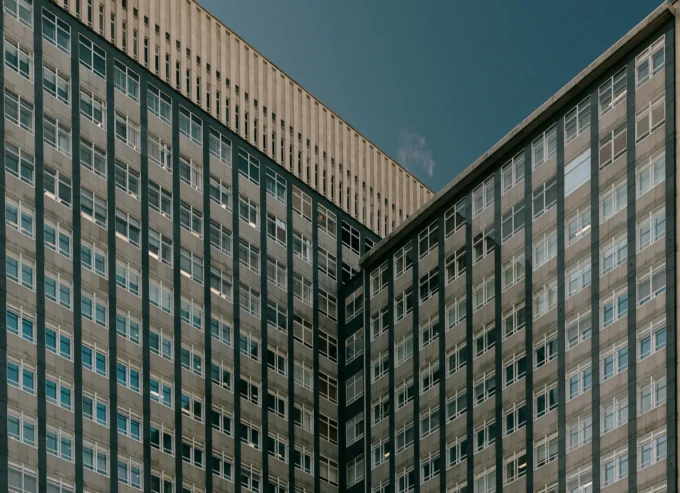- Home
- Articles
- Architectural Portfolio
- Architectral Presentation
- Inspirational Stories
- Architecture News
- Visualization
- BIM Industry
- Facade Design
- Parametric Design
- Career
- Landscape Architecture
- Construction
- Artificial Intelligence
- Sketching
- Design Softwares
- Diagrams
- Writing
- Architectural Tips
- Sustainability
- Courses
- Concept
- Technology
- History & Heritage
- Future of Architecture
- Guides & How-To
- Art & Culture
- Projects
- Interior Design
- Competitions
- Jobs
- Store
- Tools
- More
- Home
- Articles
- Architectural Portfolio
- Architectral Presentation
- Inspirational Stories
- Architecture News
- Visualization
- BIM Industry
- Facade Design
- Parametric Design
- Career
- Landscape Architecture
- Construction
- Artificial Intelligence
- Sketching
- Design Softwares
- Diagrams
- Writing
- Architectural Tips
- Sustainability
- Courses
- Concept
- Technology
- History & Heritage
- Future of Architecture
- Guides & How-To
- Art & Culture
- Projects
- Interior Design
- Competitions
- Jobs
- Store
- Tools
- More

The Great Wall of China
The series of Stories Behind Famous Landmarks aims to uncover the history, mystery, and architectural ingenuity behind the world’s most renowned landmarks, highlighting not only the physical structures themselves but also the cultural, historical, and personal stories they embody. In this article as a first article of the serie, we embark on a journey to explore one of the most astonishing human achievements that stretch across the vast landscapes of China – The Great Wall.
The Great Wall of China, a magnificent ribbon that winds its way through the diverse topography of northern China, from its western frontier in Gansu province to its eastern shores at Shanhaiguan, Hebei province, is far more than a marvel of engineering. It’s a testament to a nation’s historical perseverance, an enduring symbol of the architectural prowess of ancient China, and an epitome of human resilience and innovation.

Stretching over 21,000 kilometers, the Great Wall’s construction began as early as the 7th century BC. Several walls were built and later joined together to serve as fortifications against invasions from various nomadic tribes from the Eurasian Steppe. The most well-preserved and well-known sections we see today were primarily constructed during the Ming dynasty (1368–1644).
Built with tamped earth, wood, and bricks, the Wall’s architecture is a demonstration of human adaptability, utilizing available resources and conforming to the varied terrains it traverses – deserts, mountains, and plateaus. The Wall is not a singular, homogenous structure; it includes watchtowers for surveillance, fortresses for troops, and signal stations for communication.
Yet, beyond its architectural and strategic feats, the Great Wall is also a narrative of human endeavor. Its construction is a story of countless laborers – soldiers, peasants, prisoners – who toiled under severe conditions. Their effort and sacrifice are imbued within each brick and stone of the Wall.
Today, the Great Wall stands not only as a physical barrier but also as an enduring monument to the Chinese nation’s spirit. It’s a symbol of unity, illustrating the country’s historical periods of harmony and conflict, centralization and disunity, isolation, and openness.

As we delve deeper into the story of the Great Wall in our upcoming sections, we will uncover the many tales it holds, the civilizations it has seen rise and fall, the dynasties it has served, and the cultural significance it holds today. Join us as we journey through history, one landmark at a time.
Stay tuned for the next installment in our series, “Stories Behind Famous Landmarks”. Each landmark has a story to tell, a cultural imprint to understand, and an architectural marvel to appreciate, contributing to the rich tapestry of our shared global heritage.
Eiffel Tower
After exploring the architectural marvel and historical significance of the Great Wall of China, we now shift our gaze towards a completely different landmark that has made a profound impact in its own unique way. Journey with us to Paris, the City of Lights, home to one of the world’s most recognizable structures – the Eiffel Tower.

Constructed for the 1889 Exposition Universelle (World’s Fair) held in Paris to celebrate the centennial of the French Revolution, the Eiffel Tower emerged from the innovative mind of Gustave Eiffel. Despite initial public criticism for its stark contrast to traditional Parisian architecture, it has since become a symbol of France and a testament to human creativity and engineering prowess.
This architectural masterpiece, reaching a height of about 330 meters, was the tallest man-made structure in the world for 41 years until the completion of the Chrysler Building in New York in 1930. What makes the Eiffel Tower particularly unique is its iron lattice design, which was groundbreaking at the time of its construction and is still admired for its ingenuity and elegance.

Interestingly, while the Eiffel Tower was initially intended to be a temporary structure, its survival and eventual embrace by the public reflect the evolving appreciation of architectural aesthetics and progress. Just as the Great Wall of China offers insight into ancient Chinese civilizations, the Eiffel Tower provides a glimpse into a period of industrial advancement and innovation during the late 19th century.
As we continue our series, “Stories Behind Famous Landmarks”, we’ll delve into the intriguing stories of other landsmarks our next article. From its conception and construction to the controversy it stirred and its ultimate rise as an international symbol, the narrative of the Eiffel Tower is as captivating as the structure itself.

Submit your architectural projects
Follow these steps for submission your project. Submission FormLatest Posts
Dependable Service for Everyday Appliance Problems
When a washer stalls mid-cycle or a fridge warms up, you need...
8 Essential Web-Based Mapping Tools for Modeling Sea Level Rise and Flood Impacts
As climate change accelerates, flood risk and sea level rise have become...
How Sydney’s Architecture Responds to Climate, Light, and Lifestyle
Sydney’s architecture has never been driven by form alone. It evolves through...
Shipping Containers as Functional Infrastructure on Construction Sites
Construction sites are temporary by definition, yet the systems that support them...












Leave a comment